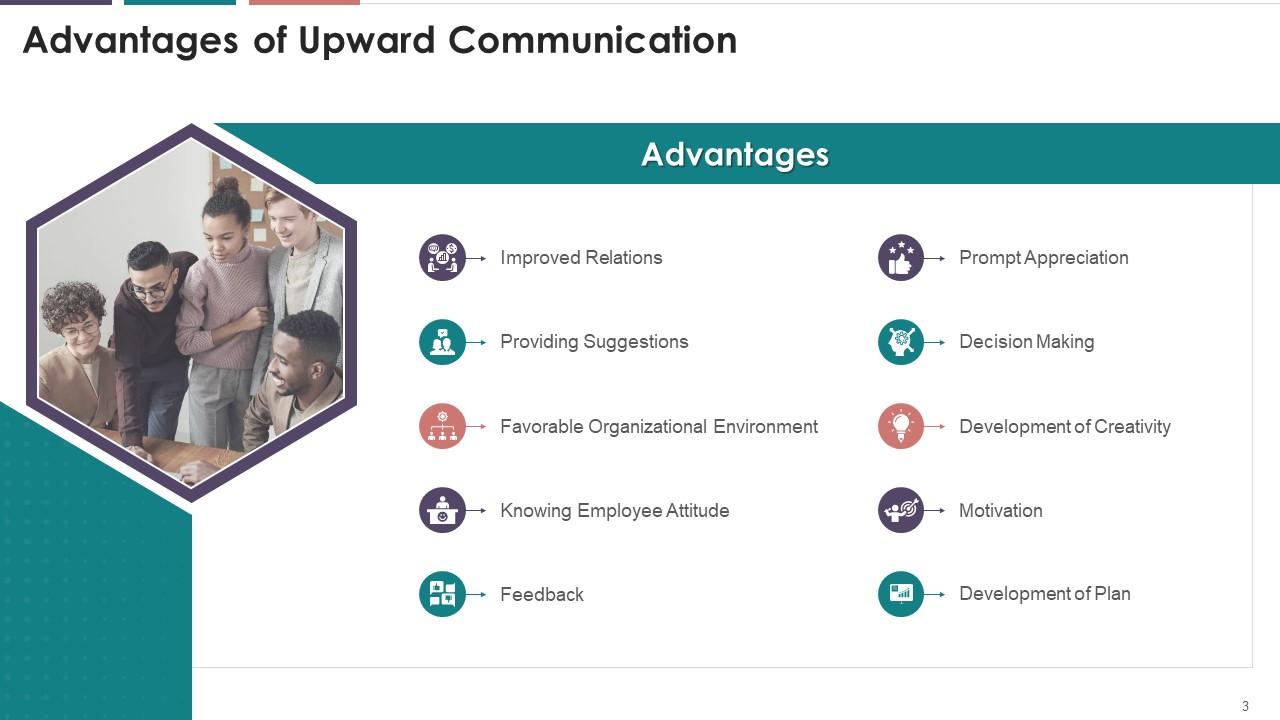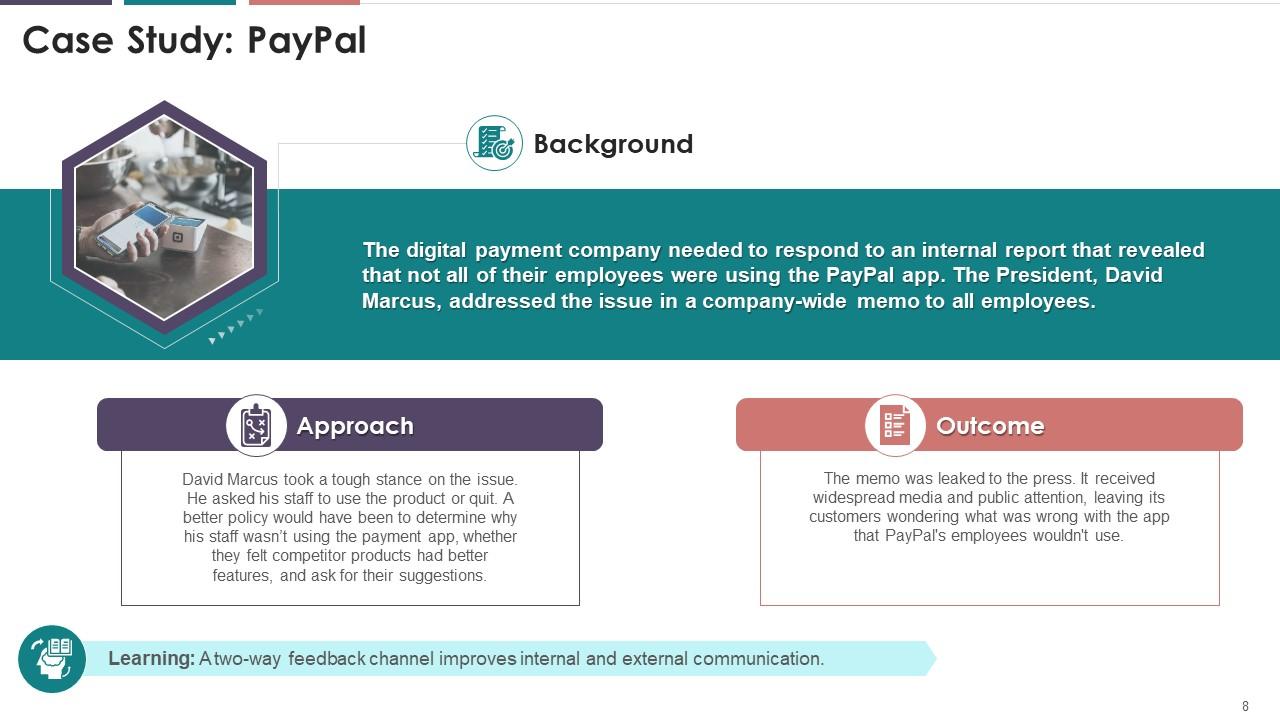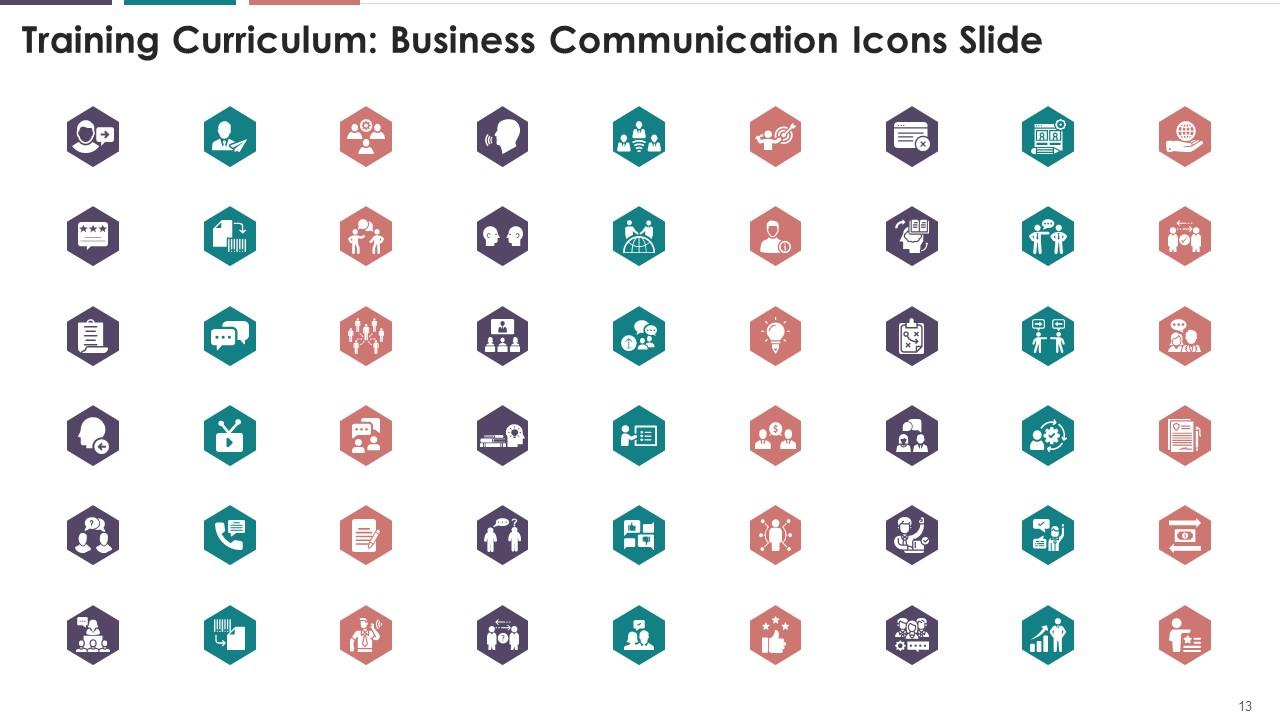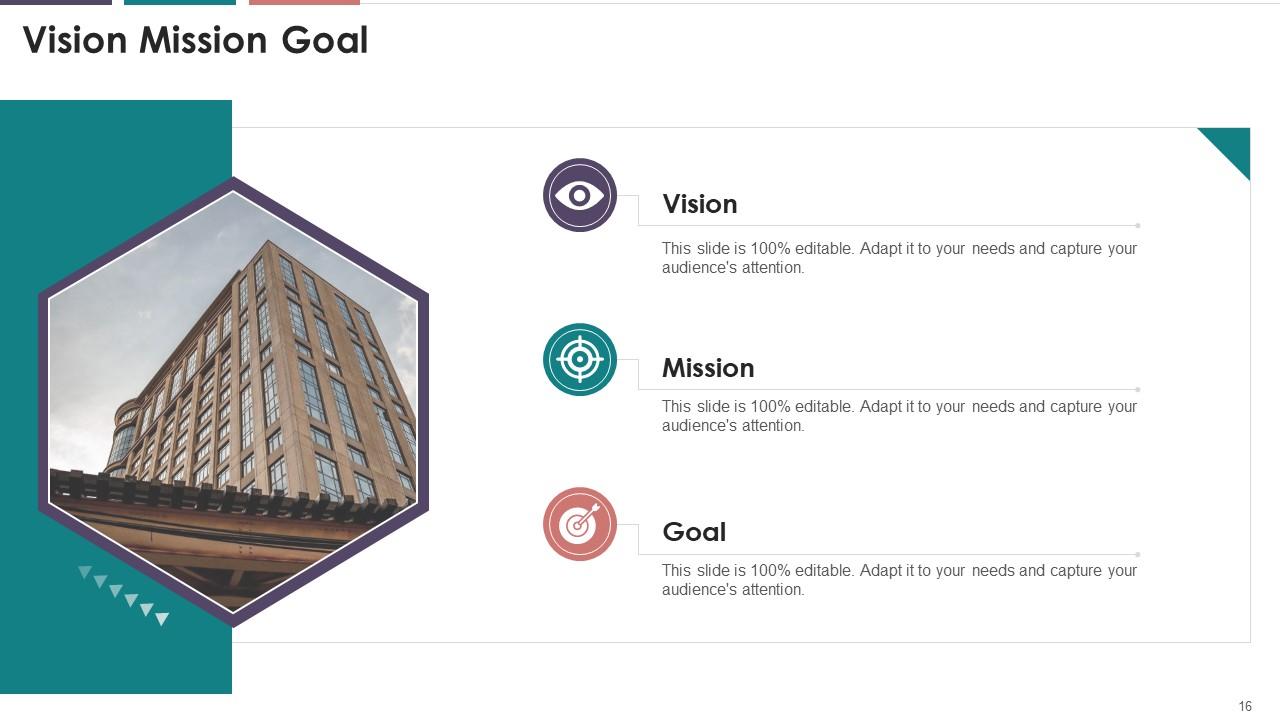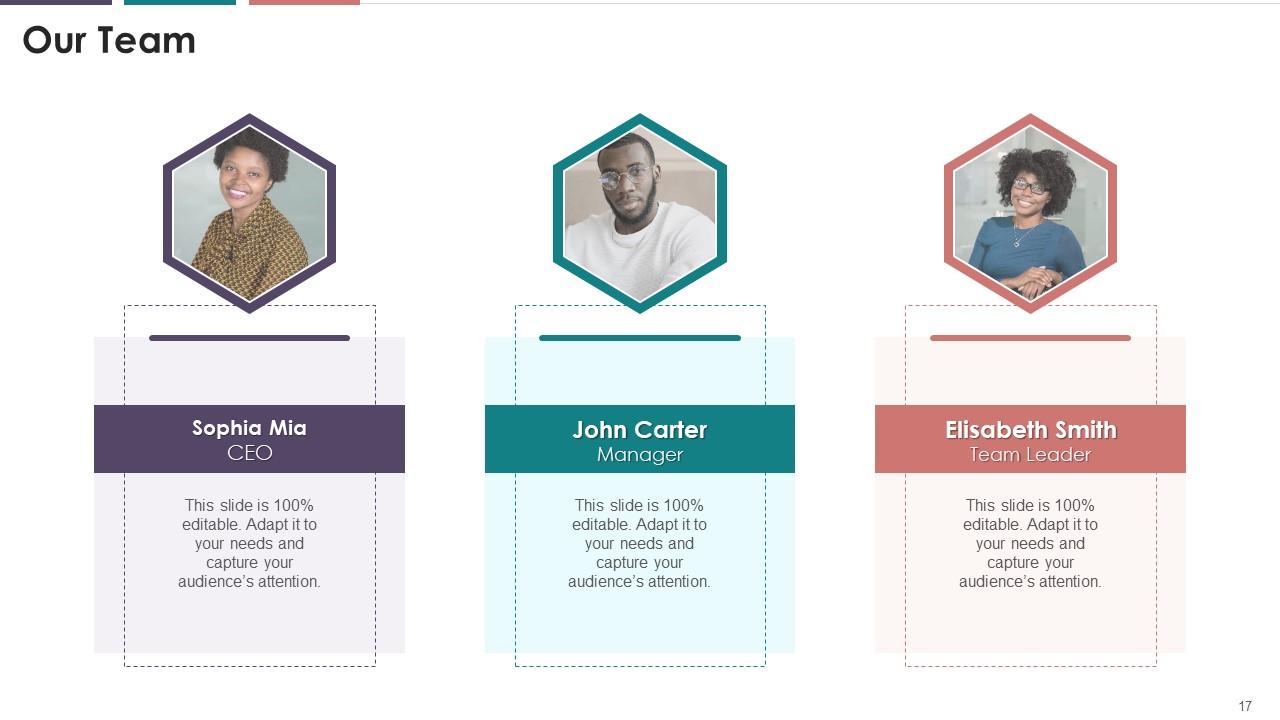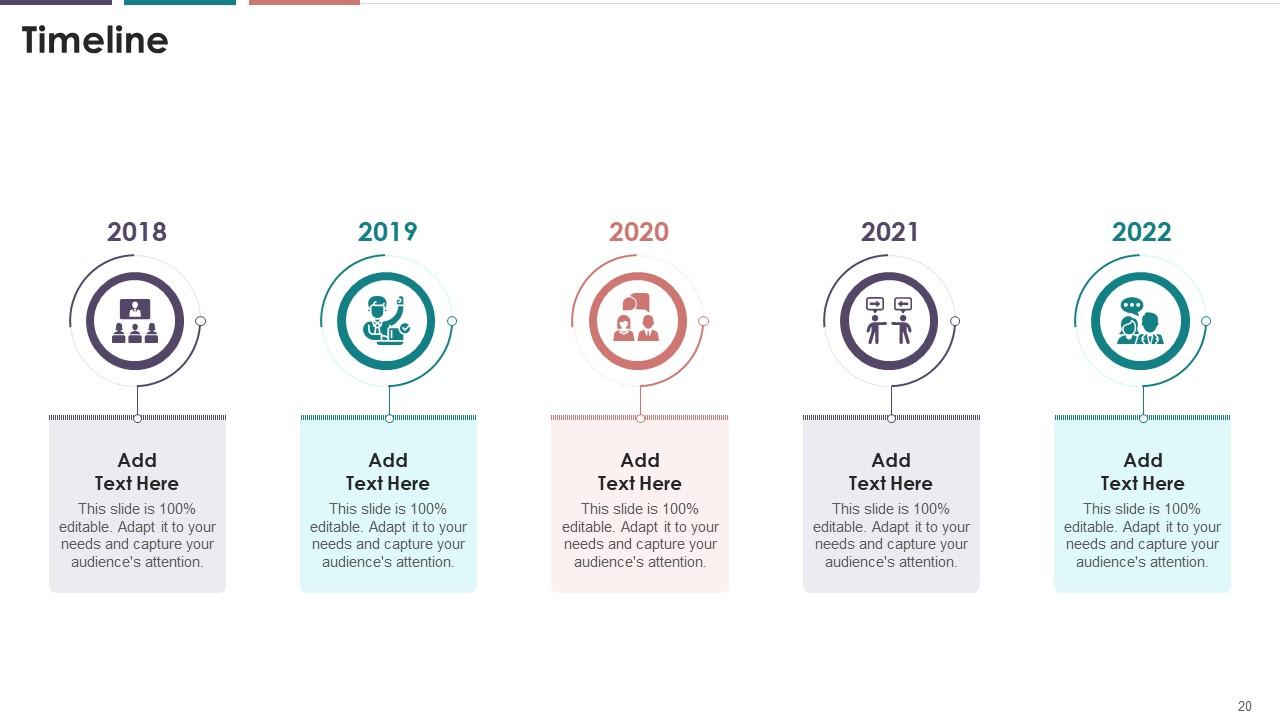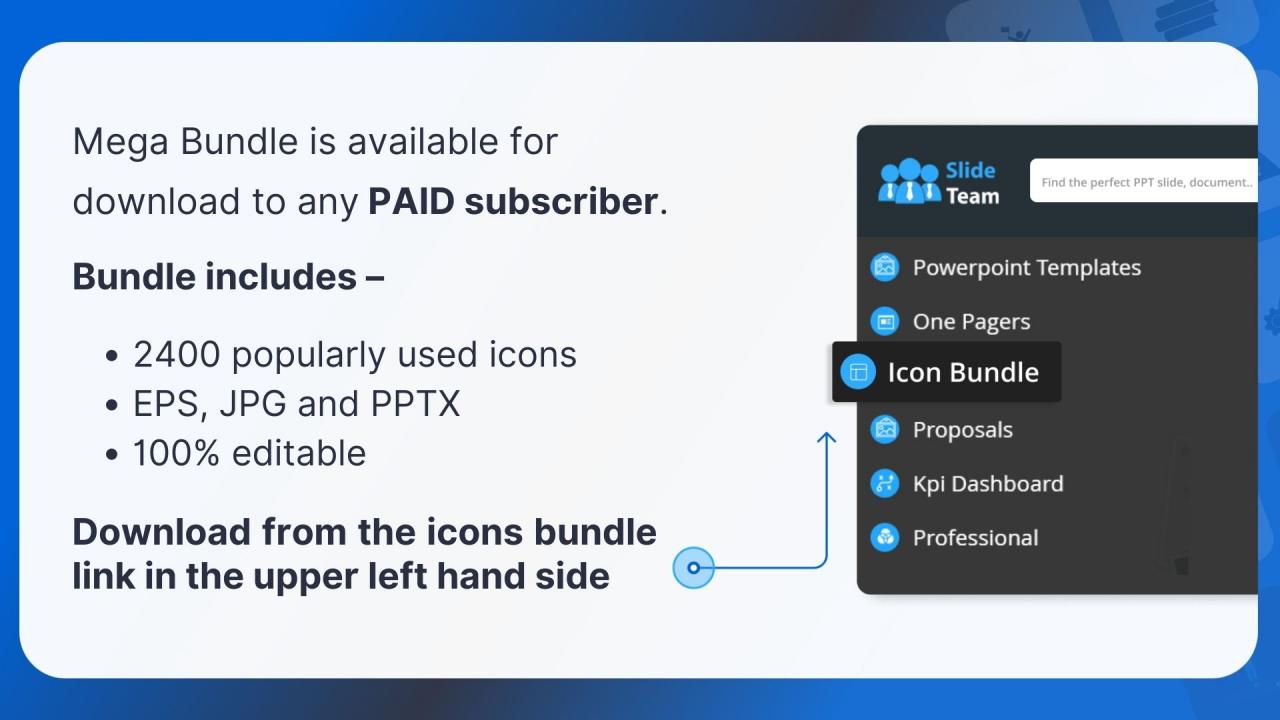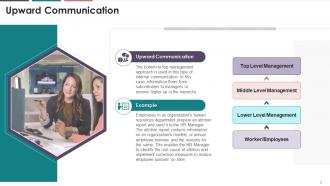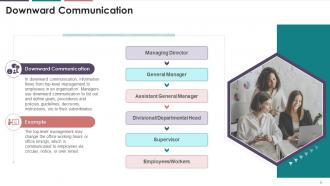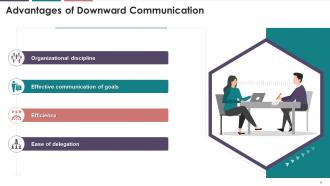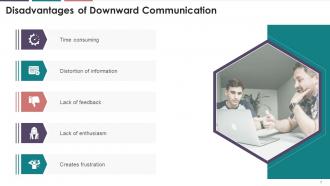Upward Downward Lateral And External Business Communication Along With Paypal Case Study Training Ppt
This set of slides covers internal communication and external business communication. It further elaborates on the types of internal communication, such as upward, downward, and lateral communication. It also includes a case study highlighting the significance of a two-way feedback channel to improve internal and external communication.
This set of slides covers internal communication and external business communication. It further elaborates on the types of..
- Google Slides is a new FREE Presentation software from Google.
- All our content is 100% compatible with Google Slides.
- Just download our designs, and upload them to Google Slides and they will work automatically.
- Amaze your audience with SlideTeam and Google Slides.
-
Want Changes to This PPT Slide? Check out our Presentation Design Services
- WideScreen Aspect ratio is becoming a very popular format. When you download this product, the downloaded ZIP will contain this product in both standard and widescreen format.
-

- Some older products that we have may only be in standard format, but they can easily be converted to widescreen.
- To do this, please open the SlideTeam product in Powerpoint, and go to
- Design ( On the top bar) -> Page Setup -> and select "On-screen Show (16:9)” in the drop down for "Slides Sized for".
- The slide or theme will change to widescreen, and all graphics will adjust automatically. You can similarly convert our content to any other desired screen aspect ratio.
Compatible With Google Slides

Get This In WideScreen
You must be logged in to download this presentation.
PowerPoint presentation slides
Presenting Upward, Downward, Lateral and External Business Communication along with PayPal Case Study. This PPT presentation is thoroughly researched by the experts, and every slide consists of appropriate content. All slides are customizable. You can add or delete the content as per your need. Download this professionally designed business presentation, add your content, and present it with confidence.
People who downloaded this PowerPoint presentation also viewed the following :
Content of this Powerpoint Presentation
Slide 1
This slide showcases the information regarding the two major types of business communication. The two major types of business communication are internal communication and external communication.
Slide 2
This slide shows information about upward communication. It emphasizes the use of the bottom-to-top management approach in internal communication. It also mentions that information flows from subordinates to managers or anyone higher up in the hierarchy in upward communication.
Instructor’s Notes:
The following are the characteristics of upward internal business communication:
- It includes a bottom-to-top approach, in which subordinates report to superiors
- It is participatory
- The main goal is to provide timely feedback, suggestions, requests, and escalation of any issues or concerns to superiors, and so on
- The information flows from lower to the upper levels
Slide 3
This slide depicts information regarding the advantages of upward communication. The benefits are improved relations, knowing employee attitude, prompt appreciation, decision making, motivation, creativity development, and favorable organizational environment, etc.
Instructor’s Notes:
Following are the advantages of upward business communication:
- Improved Relations: Subordinates express their views through upward communication. As a result, there is a harmonious relationship between superiors and subordinates
- Providing Suggestions: Through upward communication, subordinates can provide constructive feedback to superiors. These perspectives may be useful in achieving organizational objectives
- Favorable Organizational Environment: Upward communication strengthens the bond between subordinates and superiors. As a result, the organization achieves continuous growth
- Knowing Employee Attitude: Every company offers some kind of employee welfare program. If upward communication is active, the management will know how satisfied employees are with these welfare activities
- Feedback: Subordinates communicate their reactions to the superiors' decisions via upward communication. As a result, upper-level management can check to see if lower-level employees have accepted the message that superiors sent
- Prompt Appreciation: Subordinates have the opportunity to praise their boss for any positive or effective action as a result of upward communication. It eventually leads to a friendly relationship between superiors and subordinates
- Decision Making: Before making decisions, upper management wants to know specific information about the production, procurement, marketing, and financial matters, among other things. Subordinates provide relevant information through upward communication, making decision-making more manageable and faster
- Development of Creativity: Upward communication necessitates the development of a creative environment in which employees can demonstrate their development initiatives
- Motivation: Lower-level employees can express their attitudes or opinions to upper-level employees through upward communication. As a result, subordinates are influenced to work harder to meet the target
- Development of Plan: Through upward communication, upper-level management can gather information from lower-level management. The evidence gathered from such communication can be used to create and implement any plan
Slide 4
This slide depicts information on the disadvantages of upward communication. The disadvantages include providing only favorable information, a general reluctance to communicate the problem, willful manipulation of information, the threat of negative reaction from the superior, etc.
Instructor’s Notes:
The following are the disadvantages of upward business communication:
- Provides only favorable information: Subordinates only provide information that is favorable to upper management
- Discouraged due to lack of proper response: It may be discouraged as a result of top management's failure to respond appropriately
- Takes time to communicate the problem: It takes a long time to communicate problems at a higher level due to the various levels they must pass
- Willful manipulation of information: There could be deliberate manipulation of information to achieve personal goals
- The threat of negative reaction of the superior: There is a risk that the superior will react negatively
Slide 5
This slide illustrates information regarding downward communication. In downward communication, the information flows from top-level management to employees in an organization. It also mentions that managers use downward communication to list out and define various goals, procedures, policies, guidelines, decisions, instructions, etc., to their subordinates.
Instructor’s Notes:
The following are the characteristics of downward internal business communication:
- It includes a top-down approach, with superiors communicating with subordinates
- It is directive in nature
- The primary goal is to communicate organizational goals, plans, procedures, and instructions to subordinates
- The information flows from the upper level to the lower level
Slide 6
This slide depicts the advantages of downward communication. The advantages are organizational discipline, efficiency, effective communication of goals, and ease of delegation.
Instructor’s Notes:
The following are the advantages of downward communication:
- Organizational discipline: Downward communication follows the organization's hierarchy, making organizational discipline and member compliance much easier to maintain
- Efficiency: Downward communication provides efficiencies because instructions and information are delivered from sources in power who can coordinate activities at the top of the organization. Employees receive feedback from the managers who supervise them
- Effective communication of goals: Upper management can easily communicate goals and delegate responsibilities for meeting those goals
- Ease of delegation: Delegation is much easier if it comes directly from the vertical communication structure representing the chain of command
Slide 7
This slide illustrates the disadvantages of downward communication. The disadvantages are time-consuming, distortion of information, lack of feedback, enthusiasm, and frustration.
Instructor’s Notes:
The disadvantages of downward communication are as follows:
- Time consuming: Downward communication is a time-consuming process, as information flows through different levels of hierarchy. By the time when information reaches lower-level employees, it may have lost its significance
- Distortion of information: People in downward communication tend to change or manipulate information. As a result, when information is passed from one level to another, the authenticity of the information is lost
- Lack of feedback: Top-level executives usually give little or no importance to the messages received from subordinates. Subordinates rarely send feedback as a result of their superiors' negligence. Communication becomes ineffective as a result
- Lack of enthusiasm: Managers use downward communication to send orders, instructions, and advice to subordinates. As a result, a delay in the downward flow of information harms employee enthusiasm
- Creates frustration: Downward communication makes it difficult for subordinates to discuss any issues with their superiors. Furthermore, subordinates are forced to follow the orders and instructions of their superiors, which creates frustration in the minds of employees
Slide 8
This slide illustrates a case study on PayPal. It highlights background, approach, outcome, and learning from the case study.
Slide 9
This slide illustrates information about lateral communication. It emphasizes that lateral communication involves verbal or written communication between co-workers. It also mentions inter-departmental communication or communication across departments and between people of the same or similar rank within a company as lateral communication.
Slide 10
This slide depicts the advantages and disadvantages of lateral communication. The benefits of lateral communication are better understanding, improved coordination, increased productivity, end of misunderstanding, and job satisfaction. The disadvantages include lack of control, wastage of time, lack of cooperation & coordination, and low productivity in certain situations.
Slide 11
This slide illustrates information regarding external communication. It highlights that external business communication refers to interactions with people outside of the organization. These people can be customers, shareholders, suppliers, partners, regulatory bodies, etc.
Upward Downward Lateral And External Business Communication Along With Paypal Case Study Training Ppt with all 27 slides:
Use our Upward Downward Lateral And External Business Communication Along With Paypal Case Study Training Ppt to effectively help you save your valuable time. They are readymade to fit into any presentation structure.
-
I’m not a design person, so I couldn’t make a presentation to save my life. Thankfully, they have all kinds of templates that I regularly use for my work.
-
“One of the best experiences with SlideTeam for my presentation.Everything on time, communication is efficient and price is reasonable. All good in one place.”




